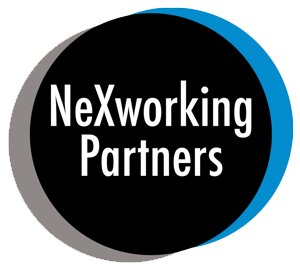


Our team sorts through all blog submissions to place them in the categories they fit the most - meaning it's never been simpler to gain advice and new knowledge for topics most important for you. This is why we have created this straight-forward guide to help you navigate our system.


And there you have it! Now your collection of blogs are catered to your chosen topics and are ready for you to explore. Plus, if you frequently return to the same categories you can bookmark your current URL and we will save your choices on return. Happy Reading!
Change management is a common phrase. So is the adage, “Don’t keep doing something just because it’s the way we’ve always done it.” So, let’s assume you are leading a group, school or MAT. What steps do you take to sustain focus, and maintain the route to lasting change?

1. Initial vision and goals – “Good business leaders create a vision, articulate the vision, passionately own the vision, and relentlessly drive it to completion.” Jack Welch
Any change worth pursuing must begin with a clear vision. This could come from the leader of the organisation or a leadership committee, but it needs to be simple, focused, and achievable. This vision has to be supported by goals that will lead the group through the change, and through the time period following the initiation.
2. Implementation plan with all stakeholders –“There’s nothing quite as powerful as people feeling they can have impact and make a difference. When you’ve got that going for you, I think it’s a very powerful way to implement change.” Anne M. Mulcahy
The vision and goals need to be well-communicated among all the stakeholders. In a school system this could include the school board, administrators, teachers, other staff members, students, parents, and community members. If the vision and goals are well-developed, and well-communicated, with the opportunity for stakeholder input, then the change is more likely to be received positively leading to widespread buy-in.
3. Initial training –“All progress takes place outside the comfort zone.” Michael John Bobak
I have heard of schools where the teachers are told that they will be implementing a 1:1 technology integration in a month with no training or input. You can guess how well those endeavours play out. Fear is the greatest hindrance to positive change. People fear that they won’t know enough to implement the change. They fear they will be expected to do “one more thing” with nothing taken off their plates. They fear that the new way of doing something won’t measure up to the tried and true methods they are used to. These fears can mostly be addressed and assuaged by proper training at the onset of the project. This training can have a hundred different looks to it: observation, professional reading, one-on-one coaching, whole-group direct instruction, etc. The point is to offer something in a non-threatening manner to show your people that you support them and are doing this to help all involved to be better.
4. Coaching/Modelling – “Success is the sum of small efforts, repeated day-in and day-out.” Robert Collier
I’m so thankful that coaching/modelling is a big part of my work as a consultant. I get to build relationships with the people I work with to offer them ongoing support. People need to know that they won’t just have new information and expectations dumped on them at the beginning. It’s the continued, personalised approach that makes such a big difference. Just like every child doesn’t learn in the same way, on the same timeline, neither do adults. Through coaching, the adults can be supported at their exact point of need.
5. Ongoing professional development – “Motivation is what gets you started. Habit is what keeps you going.” Jim Ryun
Are you seeing a trend here with #3-5? You can tell that I highly value learning as a major part of the change process. No one can stay at the top of their game if they aren’t continuously learning. By providing ongoing professional development, the leader keeps the vision and goals in front of the stakeholders, showing that it’s a continued focus, and proving that she is willing to support her staff long-term.
Change is sometimes difficult, and inevitable. How you set up the process will determine its success. Let’s work together to sustain lasting change.
“If you are working on something exciting that you really care about, you don’t have to be pushed.
The vision pulls you.”
~Steve Jobs

The author

Read more

Read more

Read more

Read more

Read more

Read more

Read more

Read more


Are you looking for solutions? Let us help fund them! Nexus Education is a community of over 11,000 schools that come together to share best practise, ideas and CPD via online channels and free to attend events. Nexus also offers funding to all school groups in the UK via nexus-education.com


Established in 2011, One Education is a company at the heart of the education world, supporting over 600 schools and academies. Our unique appeal as a provider is in the breadth and synergy of the services we offer, supporting school leaders, teachers and support staff to achieve the best possible outcomes for their pupils and staff.

School Space is a social enterprise that has empowered schools for over 12 years through their profitable and hassle-free lettings services. So far, they’ve generated over £5 million in revenue for education, helping to connect over 200 schools with their local communities.


Unify is an online sales and marketing tool that allows users to create tailored personalised documents in moments.


There’s nothing special about the energy we sell. In fact, it’s exactly the same energy as all our competitors provide. But there is something special about the way we do it. Where others complicate the process, we simplify it. Where others confuse customers with hidden terms, we’re an open book. And where others do all they can to make as much money from their customers as possible, we do all we can to make as little. Everything we do, we do it differently. Our customers are a privilege. One we’ll never take advantage of.


Securus provide market-leading monitoring solutions to safeguard students on ALL devices both online and offline. We also offer a full monitoring service, where we carry out the monitoring on behalf of the school, freeing up valuable staff resources. From the smallest school to large MAT groups, Securus offers safeguarding protection for all!


Bodet Time offers dedicated solutions to education through lockdown alerts, class change systems, PA and synchronised clock systems. Improving time efficiency of the working and school day; ensuring safety through lockdown alerts; increasing communication with customised broadcast alerts.


Robotical makes Marty the Robot - a walking, dancing coding robot that makes programming fun and engaging for learners as young as 5. Our robots come with a full Learning Platform that has complete teaching resources, to make lesson planning a breeze.